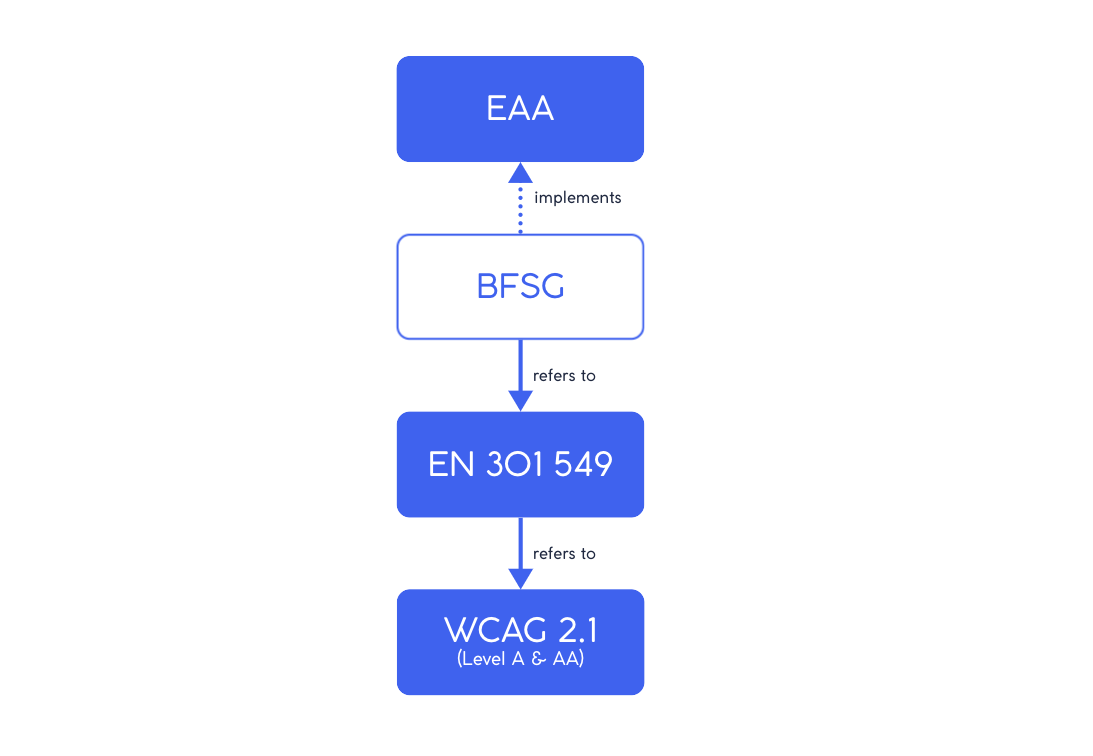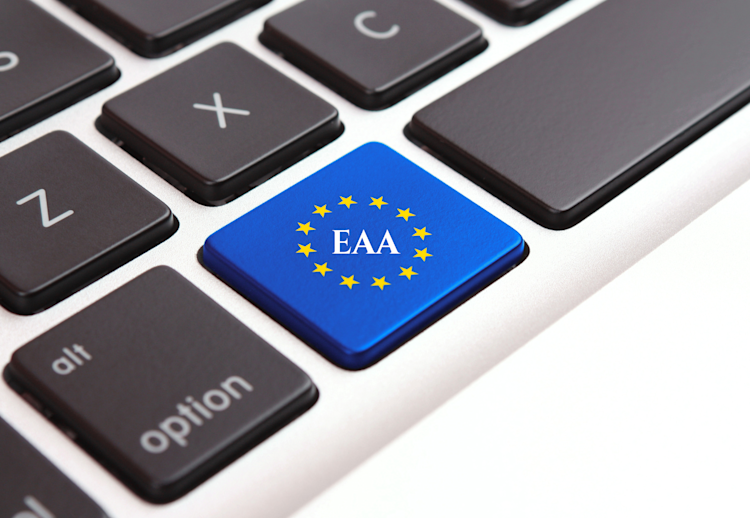Countdown to 2025: Preparing for the European Accessibility Act
What is the European Accessibility Act (EAA)?
The European Accessibility Act (EAA) is a landmark directive aimed at ensuring that people with disabilities can participate more fully in society. Its goal is to remove barriers to accessibility across the EU, promoting a more inclusive environment for everyone. By harmonizing the market for accessible products and services, the EAA also seeks to eliminate fragmented rules across member states, making it easier for businesses to operate across borders while benefiting consumers with disabilities.
Originally passed in 2019 as Directive (EU) 2019/882, the EAA gives member states until June 28, 2025, to translate its requirements into national law. This means that by 2025, companies providing certain products and services will have to comply with accessibility standards or risk facing penalties, such as fines.
More than just a legal obligation, the EAA represents a push toward greater inclusivity, empowering people with disabilities to take part in all aspects of community life. From public transportation to digital services, the EAA aims to make the world more accessible and equitable for everyone.
Which Businesses, Products, and Services are Affected by the EAA?
The EAA impacts a wide range of businesses, products, and services, ensuring they are accessible to people with disabilities. Some of the key areas covered by the EAA include:
computers and operating systems
ATMs, ticketing and check-in machines
smartphones
TV equipment related to digital television services
telephony services and related equipment
access to audio-visual media services such as television broadcast and related consumer equipment
services related to air, bus, rail and waterborne passenger transport
banking services
e-books
e-commerce
However, there are some exclusions. Small businesses—those with fewer than 10 employees and either an annual turnover or balance sheet total under €2 million—are exempt from the EAA’s requirements. Additionally, existing websites that are no longer updated are also excluded, though this scenario is quite rare in practice.
Businesses operating exclusively in the B2B (Business-to-Business) sector are generally not directly affected by the requirements of the EAA. This is because the EAA primarily targets products and services intended for end consumers—the general public. The Act’s main focus is on consumer protection and ensuring that accessible products and services are available to people with disabilities. While B2B companies may not be legally bound by the EAA, embracing accessibility within the B2B space can still offer strategic advantages.
Germany's Implementation: BFSG
In Germany, the EAA is being implemented through the Barrierefreiheitsstärkungsgesetz (BFSG). This legislation requires private businesses to comply with the European standard EN 301 549, which is closely linked to the Web Content Accessibility Guidelines (WCAG) 2.1. Essentially, these standards ensure that digital products and services meet certain accessibility criteria, making them usable for individuals with disabilities.

For businesses already familiar with the EAA, the BFSG won’t bring any unexpected challenges. The German government has described it as a "copy out" implementation of the EAA, meaning that there will be no significant deviations from the original directive (cf. draft bill of the federal government, page 39, paragraph 3). Companies already preparing for the EAA can expect the same guidelines and regulations to apply under German law.
Germany’s approach to implementing the EAA has been praised for setting a high standard for other EU countries. However, for the EAA to reach its full potential and create a truly accessible European market, it’s crucial that all member states follow through with their own national implementations.
Nice to Know: While the BFSG applies to private businesses, the Barrierefreien-Informationstechnik-Verordnung (BITV 2.0), which was realized in 2011, is focused on ensuring that websites of federal institutions are accessible. Both laws are largely based on the same standards — EN 301 549 and WCAG 2.1. However, there are some key differences. BITV 2.0 includes 38 additional criteria that are not found in the BFSG, meaning the accessibility requirements for federal institutions are stricter than those for private companies. This marks the continued influence of EN 301 549 and WCAG on accessibility regulations in both public and private sectors.
Benefits for Businesses
Implementing the EAA doesn’t just benefit people with disabilities—it offers tangible advantages for businesses too. Here’s why accessibility is a win-win:
Reaching more users: Even people with temporary impairments, like a broken arm, can still use your products or services if they’re accessible. This opens up your business to a broader audience and ensures a better user experience (UX) for everyone.
Addressing situational limitations: Accessibility isn’t only for permanent disabilities. For example, users struggling to see a smartphone screen in bright sunlight will appreciate a more accessible interface. By considering these factors, businesses make their products usable in more scenarios.
Enhanced user experience: Accessibility naturally leads to improved usability. Designing with accessibility in mind makes navigating your site or service easier for all users, not just those with disabilities.
Better SEO performance: Accessible websites tend to be more search-engine friendly. Features like alt text for images and proper heading structures make it easier for search engines to index your site, improving your visibility online.
By embracing accessibility, businesses can boost their reach, improve user satisfaction, and gain a competitive edge in the digital marketplace.
How is the EAA Enforced? Will There Be Penalties?
The EAA will be enforced with a structured approach to ensure compliance, and there are significant consequences for businesses that fail to meet the required standards. Taking Germany’s BFSG as an example, here’s how enforcement works:
Monitoring by authorities: In Germany, the market surveillance authorities of each federal state will oversee compliance. They will ensure that websites, products, and services meet accessibility standards.
Non-compliance procedure: If a website or service is found to be non-accessible after an inspection, the business will be asked to make the necessary adjustments. The operator will have the right to respond before any further action is taken.
Further consequences: If the business fails to comply after the initial request, a second warning will be issued, this time with a threat of suspending the service if accessibility is not achieved.
Fines: Violating the accessibility requirements outlined in §37 of the BFSG can result in fines of up to €100,000.
Consumer involvement: Consumers themselves can request intervention by reporting non-compliant businesses to the market surveillance authorities.
In short, enforcement will be rigorous, with a clear process for businesses to correct issues. However, failure to comply could result in significant financial penalties and the disruption of business operations.
I Have an Existing Website. What Do I Need to Do Now?
If you have an existing website, it’s essential to ensure it meets the accessibility standards set by the EAA. Here’s what you need to consider:
Check if your website falls under the EAA: First, determine if your business or website is required to comply with the EAA. For the German implementation (BFSG), you can use the online checker to see if your website meets the criteria for accessibility requirements.
Evaluate your website’s accessibility: The first step is to assess whether your website is already accessible. This means making sure it’s usable by people with disabilities without requiring extra effort or outside assistance.
Understand the legal definition of accessibility: According to Germany's BFSG, a website is considered accessible when "it can be found, accessed, and used by people with disabilities in the usual way, without significant difficulty and generally without external help." (§ 3 Abs. 1 S. 2 BFSG).
Ensure compliance with WCAG 2.1: Since the BFSG relies on the European Standard EN 301 549, which in turn is based on the WCAG 2.1, your website needs to be WCAG-compliant. These guidelines cover everything from text readability to navigation and multimedia content.
Learn more about WCAG: For a deep dive into how to implement WCAG standards, check out our blog post, “Understanding WCAG,” where we break down the key steps to making your website fully accessible.
Conclusion
The EAA is a significant step toward making products and services more accessible for people with disabilities across the EU. For businesses, this isn’t just about meeting legal requirements, but about creating a more inclusive and user-friendly experience for everyone. With the June 2025 deadline approaching, it's essential to evaluate whether your website and services meet the necessary accessibility standards.
Germany’s BFSG serves as a clear framework for implementing the EAA, emphasizing the importance of compliance with standards like EN 301 549 and WCAG 2.1. Ensuring your business is aligned with these regulations can help you avoid penalties while also contributing to a more accessible digital landscape.
If you need guidance on how to adapt to these requirements, whether through a workshop or assistance within a project, feel free to reach out to us. Alternatively, you can also take a look at our blog posts “The A11y Mindset” and “Understanding WCAG” to learn more about this topic.
